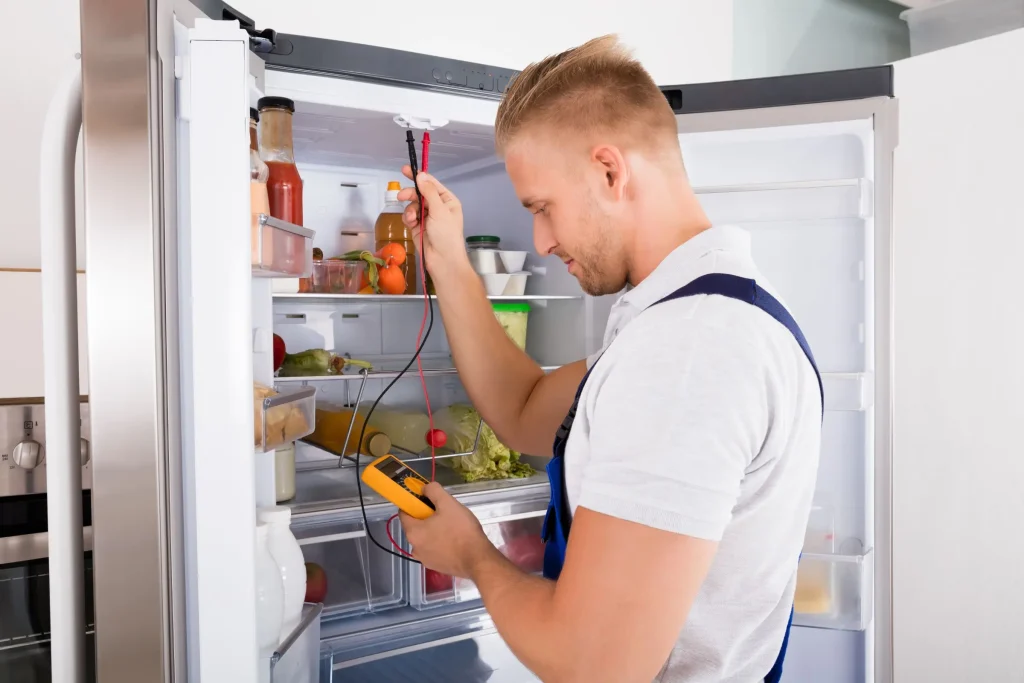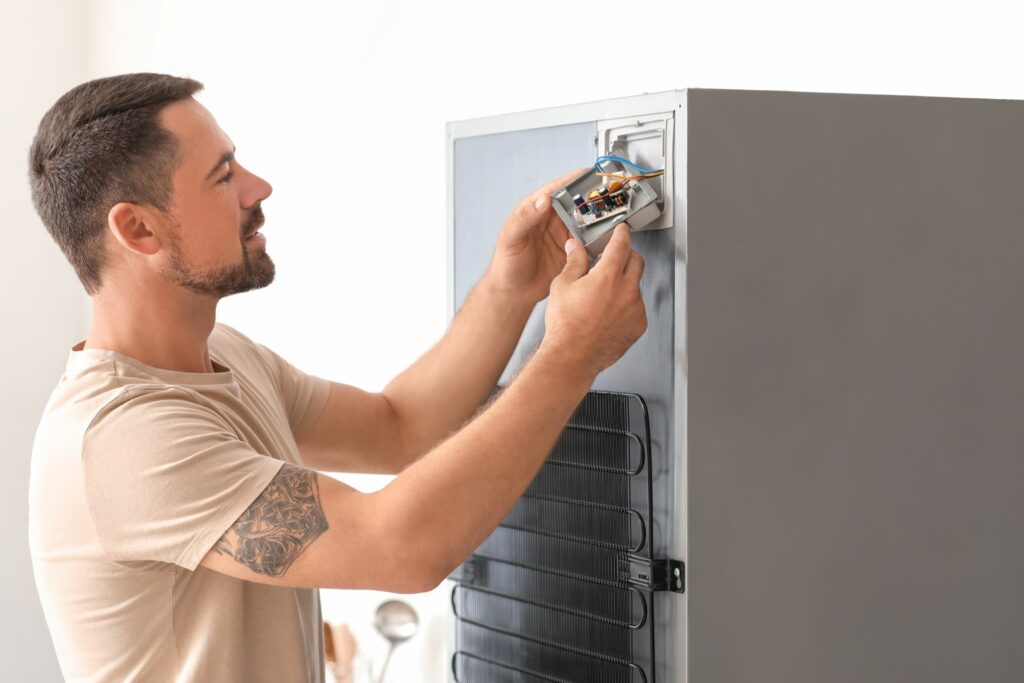
Ice buildup in your trusty Samsung refrigerator isn’t just a visual annoyance; it can spell trouble for your appliance, affecting its efficiency and longevity. But before you panic about costly repairs, understand that you might be able to resolve the issue on your own. This blog explores the causes of ice buildup, guides you through step-by-step troubleshooting, and provides valuable tips for preventing future frost formations.
Understanding the Causes of Ice Build Up in Samsung Refrigerators
Here are some common culprits:
- Faulty Defrost System: Your refrigerator has a defrost system that periodically melts frost. If components like the defrost heater, timer, or thermostat malfunction, ice can accumulate.
- Damaged Door Gasket: The rubber seal (gasket) around your freezer door keeps cold air in and warm air out. A torn, loose, or dirty gasket allows warm air to sneak in, leading to condensation and ice buildup.
- Clogged Defrost Drain: The defrost drain carries melted water away from the freezer. Blockages in this drain can cause water to pool and refreeze.
- Improper Temperature Settings: Excessively low freezer temperatures overwork the system and contribute to faster frost accumulation.
- Frequent Door Opening: Every time you open the freezer door, warm and humid air rushes in, potentially condensing and freezing inside the compartment.
Common Reasons for Ice Buildup
Need help with ice build up in samsung fridge? Call us
In addition to the above, you may encounter ice buildup in your Samsung refrigerator due to:
- Overly full freezer: An overcrowded freezer can obstruct airflow, hindering the defrost process.
- Storing hot food directly: Introducing hot or warm items to your freezer increases internal moisture, which can turn into ice.
Impact of Ice Buildup on Refrigerator Performance
Don’t think of ice buildup as merely a cosmetic issue. Unchecked, it can have adverse consequences:
- Reduced Energy Efficiency: Ice on the evaporator coils makes your refrigerator work harder to maintain temperatures, consuming more energy.
- Uneven Cooling: Frost formations may disrupt airflow, leading to inconsistent temperatures throughout the freezer.
- Strained Motor: As your refrigerator’s motor labors to compensate for ice buildup, the wear and tear can shorten its lifespan.
- Food Spoilage: Fluctuating temperatures created by ice can impact food quality and safety.
Steps to Fix Ice Buildup in Samsung Refrigerators
Defrosting the Freezer
- Begin by unplugging your refrigerator.
- Remove food items. Store them temporarily in coolers or another refrigerator.
- Allow the ice to melt naturally. Speed up the process using a hairdryer on a low setting (maintain a safe distance).
- Thoroughly dry the interior of the freezer.
Checking and Clearing the Defrost Drain
- Locate the defrost drain (usually at the back of the freezer, near the bottom).
- Use warm water and a turkey baster to flush out the drain.
- For stubborn clogs, carefully insert a flexible wire. Avoid undue force to prevent damage.
Inspecting the Door Gasket
- Look for any rips, tears, or gaps around the door seal.
- Check if the gasket is loose or dirty.
- Clean the gasket with soapy water and ensure it forms a tight seal. If severely damaged, consider replacing it.
Adjusting the Temperature Settings
- Consult your Samsung refrigerator manual for recommended temperature guidelines.
- Avoid setting the temperature unnecessarily low.
Cleaning the Condenser Coils
- The condenser coils are located on the back or underside of your refrigerator.
- Unplug the appliance. Gently clean the coils with a soft brush or vacuum attachmen
Preventive Measures to Avoid Future Ice Buildup (continued)
- Regularly Defrost the Freezer: Even without visible ice, defrost your freezer every few months if it doesn’t have an automatic defrost function.
- Keep the Freezer Door Closed Properly: Minimize opening the door too frequently or for extended periods.
- Monitoring the Temperature Settings: Double-check that your freezer temperature remains within the recommended range.
- Routine Maintenance Checks: Periodically inspect the door gasket for damage and clean the condenser coils of accumulated dust.

